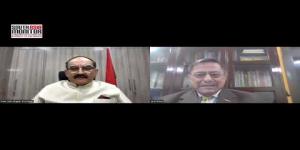Nepal records lowest population growth in eight decades; data from disputed Indian territories also included
Nepal’s population grew by 10.18 percent in the last decade, 0.93 percent annually—the lowest in the last eight decades—with women constituting 51.04 percent of the total 29,192,480 (roughly 29 million)

Nepal’s population grew by 10.18 percent in the last decade, 0.93 percent annually—the lowest in the last eight decades—with women constituting 51.04 percent of the total 29,192,480 (roughly 29 million). The latest census also included, curiously enough, demographic data from Kalapani, Lipulekh, and Limpiyadhura, Indian territories which Nepal started claiming in 2020 by releasing a new political map.
The preliminary data, released by the Central Bureau of Statistics on Wednesday, suggested out-migration for jobs and education as one of the key factors for slow population growth, which has well below the global annual average of 1.01 percent.
“Low growth rate of the population indicates that birth rate in the country has decreased,” Hem Raj Regmi, deputy director-general of the Central Bureau of Statistics, was quoted as saying by the Kathmandu Post. “Out-migration also appears to be another reason behind the slowest growth rate in eight decades.”
An estimated seven million Nepalese nationals—close to one-fifth of the country’s total population - are believed to be living in India, though no census has ever been done to count them. The Nepalese get national treatment—equal to that of any Indian citizen— in India, according to the 1950 India-Nepal Treaty of Peace and Friendship.
In the 2011 census, the total population was 26,494,504 (roughly 26.4 million) and recorded an annual growth of 1.35 percent, which in the 2021 census came down to 0.93 percent. In the last ten years, the population grew by 2.7 million.
Data show that the gender ratio (female to male) is 100: 95.91 — from earlier 100: 94.16 in the 2011 census. The number of total families in the country is 6.76 million, with an average of 4.32 persons per family, reported My Republica. The number of families grew by 24.57 percent in the last decade, adding close to 1.33 million new families.
According to this, 12 families on average are found living in 10 houses.
Interestingly, the Nepal government also included what has now become a disputed territory of Kalapani, Lipulekh, and Limpiyadhura. Central Bureau of Statistics (CBS), the body that conducted the census, said it had counted the people in these areas through "informal ways”, estimating close to 500-750 people might be living there.
Significantly, the CBS had sought access to these areas for census through a letter to Indian authorities, which generated no response from the latter.
(SAM)
to check out and do so! Your writing taste has bbeen surprised me.
Thanks, quite nice post. http://Boyarka-Inform.com/









Post a Comment